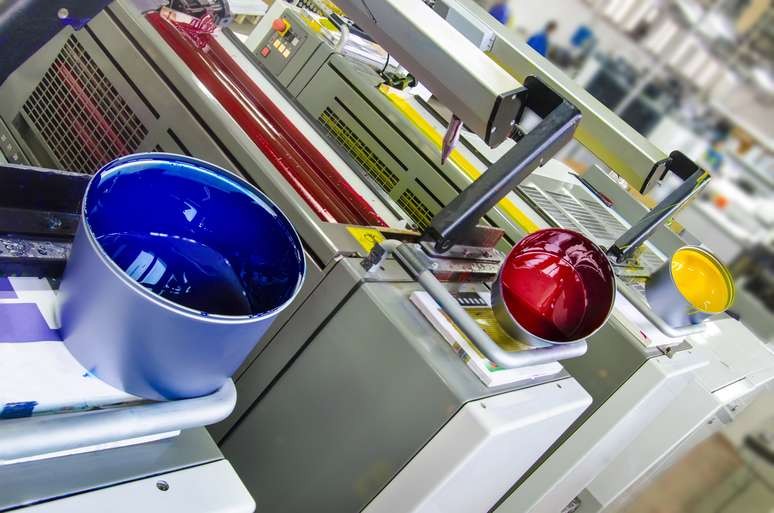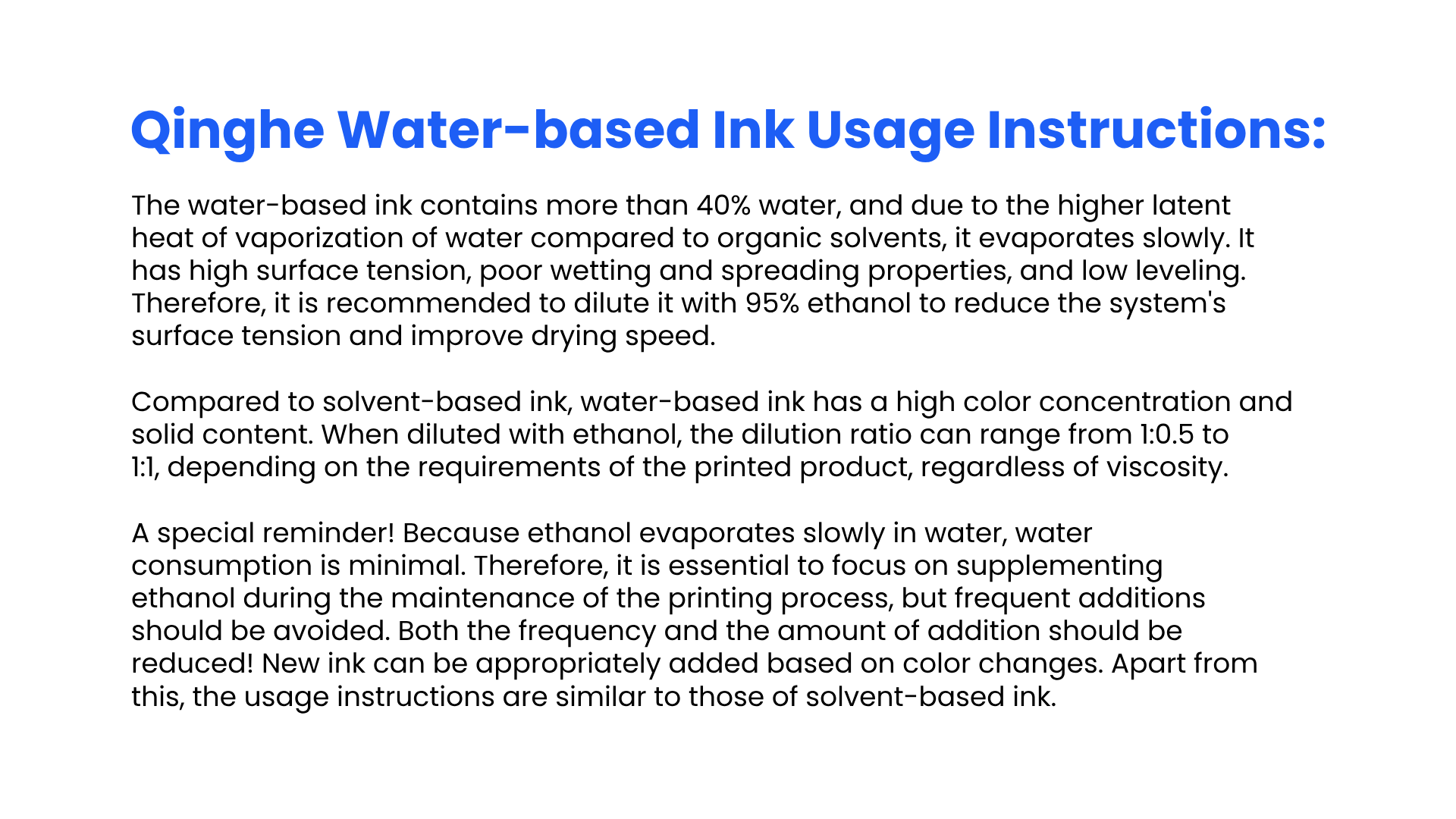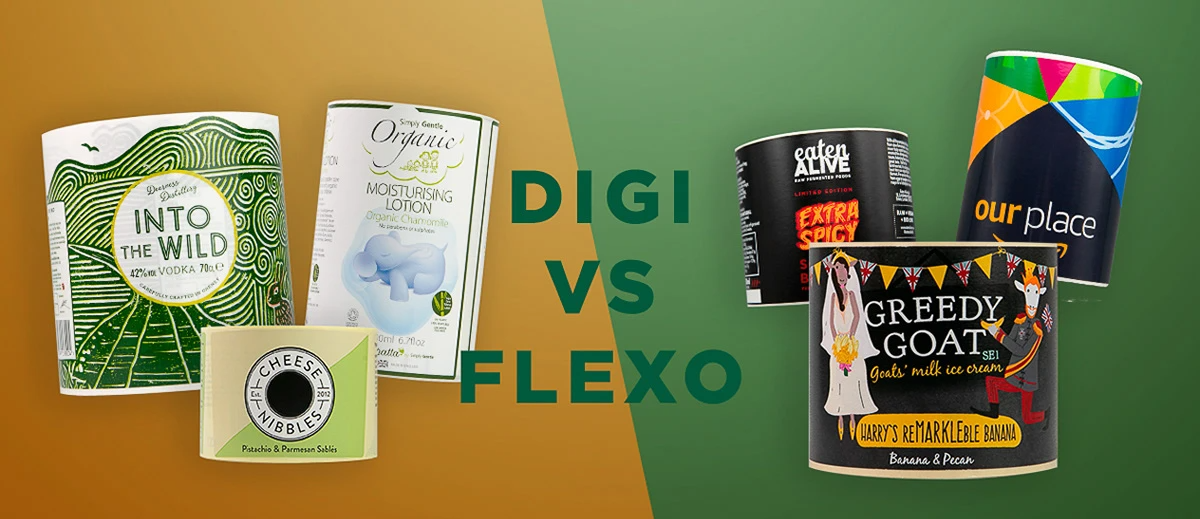Introduction

In today's eco-conscious world, the demand for sustainable packaging is on the rise. As companies strive to reduce their environmental footprint, the debate between offset print vs digital print for packaging has gained momentum. Understanding the differences and environmental impact of these printing technologies is crucial for making informed decisions in packaging design and production.
The Growing Need for Sustainable Packaging
With increasing awareness about climate change and plastic pollution, consumers are seeking eco-friendly packaging solutions. This has led to a growing demand for sustainable packaging that minimizes environmental impact throughout its lifecycle.
Offset Print vs. Digital Print: An Overview
The choice between offset print and digital print for packaging can be a critical decision for businesses. While offset printing offers cost-effective high-volume production, digital printing provides short-run flexibility and quick turnaround times.
The Environmental Impact of Printing Technologies
Both offset and digital printing have their own environmental implications. Understanding how these technologies differ in terms of energy consumption, waste generation, and chemical usage is essential in making environmentally responsible choices.
Advantages of Offset Print for Packaging

Offset print offers several advantages for packaging, making it a popular choice for many brands. Firstly, it is highly cost-effective and ideal for high volume printing, allowing businesses to produce large quantities of packaging materials at a lower cost per unit. This makes offset printing a practical choice for companies looking to scale their production without breaking the bank. Additionally, offset print delivers superior color reproduction and image quality compared to digital print, ensuring that packaging designs are vibrant and visually appealing. Moreover, offset print is compatible with various substrates, including paper, cardboard, and plastic, offering versatility in packaging material options.
Cost-Effectiveness and High Volume Printing
Offset printing is known for its cost-effectiveness when producing packaging materials in bulk quantities. The ability to print large volumes at a lower cost per unit makes it an attractive option for businesses looking to maximize their budget while meeting high demand.
Offset printing also offers superior color reproduction and image quality, making it an ideal choice for packaging materials that require vibrant and detailed graphics. The advanced printing technology used in offset printing ensures that colors are accurately reproduced, and images are sharp and clear. This is essential for businesses looking to make a strong visual impact with their packaging, as it allows for the creation of eye-catching designs that stand out on the shelf.
Superior Color Reproduction and Image Quality
One of the standout features of offset printing is its ability to deliver exceptional color reproduction and image quality. This ensures that packaging designs are vivid and visually striking, capturing the attention of consumers and leaving a lasting impression. Whether it's vibrant logos, intricate patterns, or high-resolution product images, offset printing excels in bringing out the full spectrum of colors and details, making packaging truly stand out on the shelf. This level of quality and precision is essential for brands looking to make a strong visual impact and convey a sense of professionalism and attention to detail.
Compatibility with Various Substrates
Offset print technology supports a wide range of substrates, providing flexibility in choosing packaging materials that best suit the product being packaged. Whether it's paper-based or plastic packaging, offset printing can accommodate different substrates with ease.
In addition to accommodating different substrates with ease, offset printing also offers excellent adhesion properties, ensuring that the ink adheres well to a variety of packaging materials. This means that whether you're printing on paper, cardboard, or plastic, you can trust that the colors will remain vibrant and the text will be crisp and clear. This level of adhesion is crucial for creating high-quality packaging that accurately represents your brand and product.
Advantages of Digital Print for Packaging

Digital printing offers several advantages for packaging, making it a popular choice for many businesses. One key advantage is the short-run flexibility and quick turnaround time that digital printing provides. Unlike offset printing, which requires time-consuming setup and plate-making processes, digital printing allows for on-demand printing of small quantities with minimal setup time.
A major benefit of digital print for packaging is its variable data printing capabilities. This means that each package can be customized with unique text, images, or other content, making it ideal for personalized marketing campaigns or product variations. This level of customization is not easily achievable with offset printing and gives businesses a competitive edge in the market.
In addition to its flexibility and variable data capabilities, digital print also reduces setup time and waste compared to offset printing. With digital printing, there are no plates or setups required, which means less material waste and a more environmentally friendly process overall.
The Environmental Impact of Printing for Packaging

Eco-Friendly Practices in Offset Printing
Offset printing for packaging offers eco-friendly practices that reduce its environmental impact. This method uses soy-based inks, which are more sustainable and biodegradable than traditional petroleum-based inks. Additionally, offset printing minimizes waste by efficiently using ink and paper, contributing to a more environmentally conscious packaging production process.
Sustainable Benefits of Digital Printing
Digital printing for packaging provides sustainable benefits that make it a more environmentally friendly option. This method eliminates the need for plates and setup materials, reducing waste and energy consumption. Furthermore, digital printing allows for on-demand production, minimizing excess inventory and reducing the overall environmental footprint of packaging production.
Reduction of VOC Emissions in Printing Processes
Both offset and digital printing have made significant strides in reducing volatile organic compound (VOC) emissions during the printing process. By using low-VOC or VOC-free inks and implementing advanced air filtration systems, both printing methods contribute to a healthier environment by minimizing air pollution and promoting cleaner air quality.
Continuing to emphasize sustainability through eco-friendly practices is essential for the future of packaging printing. Both offset and digital printing offer environmentally responsible solutions that cater to the growing demand for sustainable packaging options.
Quality and Consistency in Packaging

Offset Printing's Precise Color Matching
When it comes to packaging, color accuracy is crucial for brand recognition and consumer appeal. Offset printing excels in this area, offering precise color matching that ensures the packaging design looks exactly as intended. This level of consistency is essential for maintaining a professional and cohesive brand image across all packaging materials.
Digital Printing’s Consistent Image Reproduction
Digital printing technology has made significant advancements in recent years, allowing for consistent image reproduction on various packaging substrates. This means that intricate designs and high-resolution images can be faithfully reproduced without any loss of detail or quality. The ability to maintain consistent image reproduction is a key advantage of digital print for packaging.
Meeting Customer Expectations for Packaging Quality
In today's competitive market, meeting customer expectations for high-quality packaging is non-negotiable. Both offset and digital printing offer unique advantages in achieving this goal, whether it's through precise color matching or consistent image reproduction. By understanding the specific needs of their customers, brands can make informed choices about which printing method best aligns with their quality standards.
With a focus on quality and consistency, it's clear that both offset and digital printing have their own strengths when it comes to meeting the demands of modern packaging design. Whether it's precise color matching or consistent image reproduction, brands have the opportunity to elevate their packaging through informed printing choices that prioritize customer satisfaction and brand integrity.
The Future of Packaging Printing

Sustainability Trends in Packaging Design
As companies continue to prioritize eco-friendly practices, sustainability trends in packaging design are on the rise. Consumers are demanding more environmentally conscious packaging, leading to an increased focus on sustainable materials and production processes. This shift is driving the need for printing solutions that minimize environmental impact while still delivering high-quality results.
With the increasing focus on sustainable materials and production processes, companies are exploring innovative ways to reduce their environmental footprint. This includes the use of biodegradable and compostable packaging materials, as well as implementing energy-efficient manufacturing practices. By embracing these sustainability trends, businesses can not only meet consumer demands but also contribute to a healthier planet for future generations.
Technology Advancements in Digital Printing
With advancements in digital printing technology, the debate over offset print vs digital print for packaging continues to evolve. Digital printing offers greater flexibility, reduced setup time, and minimal waste, making it a compelling choice for short-run packaging projects. As technology continues to improve, digital printing is becoming an increasingly viable and sustainable option for packaging production. Additionally, the ability of digital printing to produce variable data and personalized packaging at high speeds is revolutionizing the way brands engage with consumers, allowing for targeted marketing and customization that was previously unattainable with traditional offset printing methods.
The Role of Qinghe Chemical in Green Printing Solutions
Qinghe Chemical is at the forefront of green printing solutions, providing innovative technologies that promote sustainability in packaging printing. By developing eco-friendly printing materials and processes, Qinghe Chemical is helping businesses meet their sustainability goals without sacrificing quality or efficiency. Their commitment to environmentally responsible solutions makes them a valuable partner in the future of sustainable packaging.
By embracing sustainability trends in design and leveraging technology advancements in digital printing, businesses can make informed choices that benefit both the environment and their bottom line. With partners like Qinghe Chemical leading the way in green printing solutions, the future of packaging printing is bright and eco-friendly.
Conclusion

In conclusion, the debate between offset print vs digital print for packaging continues to evolve as sustainability becomes a top priority. It's important to make informed choices for sustainable packaging by weighing the advantages and disadvantages of both printing methods. Finding the right printing solution for your packaging needs is crucial in meeting customer expectations for quality and consistency. Embracing innovation in packaging printing, such as the use of eco-friendly practices and technology advancements, will shape the future of sustainable packaging design.
Making Informed Choices for Sustainable Packaging
When deciding between offset print vs digital print for packaging, it's crucial to consider the environmental impact and sustainability benefits of each method. Understanding the difference between printing and digital printing is essential in making informed choices that align with eco-friendly practices. By embracing sustainable packaging solutions, businesses can contribute to reducing their carbon footprint while meeting consumer demands for environmentally conscious products. Additionally, it's important to consider the recyclability of materials used in both printing methods, as well as the energy consumption and waste generation associated with each process. Choosing a printing solution that minimizes environmental impact can help businesses showcase their commitment to sustainability and attract eco-conscious consumers.
Finding the Right Printing Solution for Your Packaging Needs
The decision on which printing method to use ultimately depends on your specific packaging needs. While offset printing offers cost-effectiveness and high volume capabilities, digital printing provides short-run flexibility and reduced setup time. By evaluating your production requirements and environmental goals, you can find the right balance between efficiency and sustainability in your packaging printing process.
After evaluating your production requirements and environmental goals, it's important to consider the overall impact of your packaging printing process. By choosing a method that aligns with your sustainability objectives, you can reduce waste and minimize your carbon footprint. Additionally, advancements in eco-friendly printing technologies offer innovative solutions for reducing energy consumption and using biodegradable materials, further enhancing the environmental friendliness of your packaging.
Embracing Innovation in Packaging Printing
As technology continues to advance, so does the potential for innovation in packaging printing. The role of Qinghe Chemical in providing green printing solutions showcases a commitment to eco-friendly practices that align with sustainability trends in packaging design. By embracing these innovative solutions, businesses can stay ahead of the curve in meeting consumer expectations while reducing their environmental impact.
Furthermore, Qinghe Chemical's green printing solutions not only align with sustainability trends, but also demonstrate a commitment to quality and innovation. By utilizing eco-friendly practices, businesses can differentiate themselves in the market and appeal to environmentally conscious consumers. This strategic approach not only benefits the environment but also enhances brand reputation and customer loyalty.

